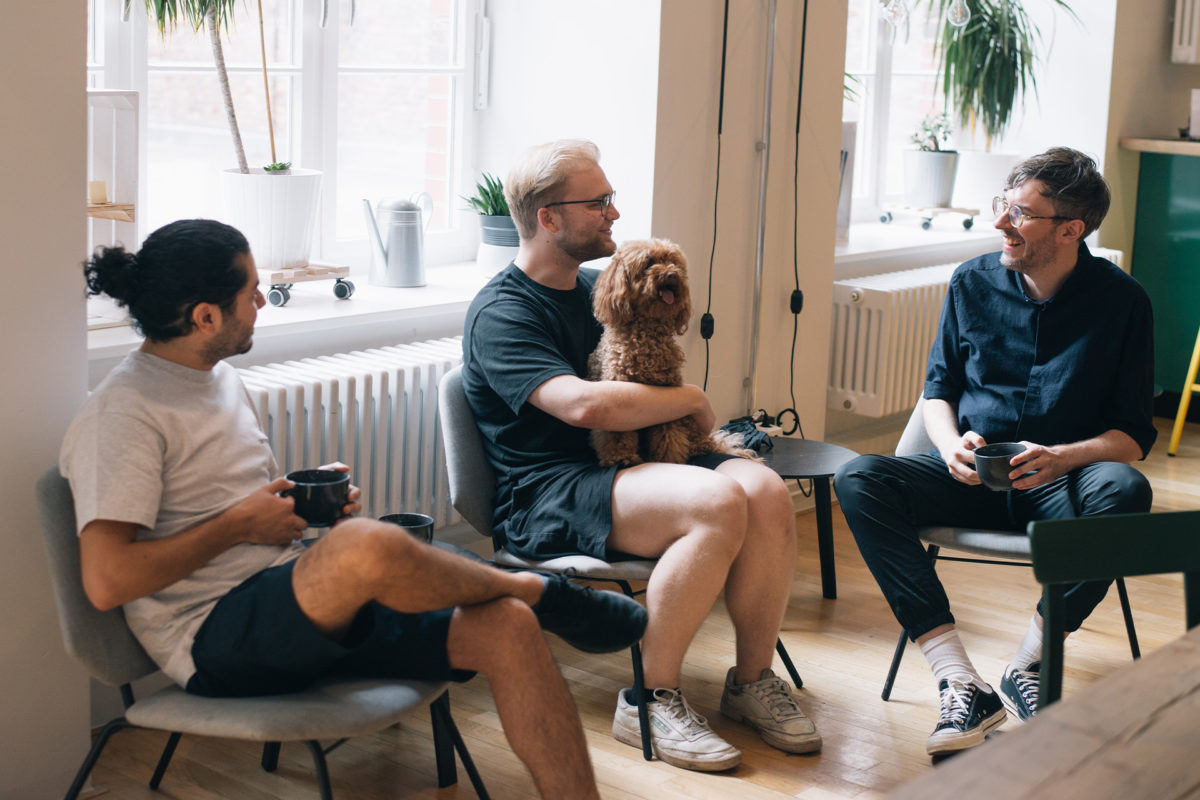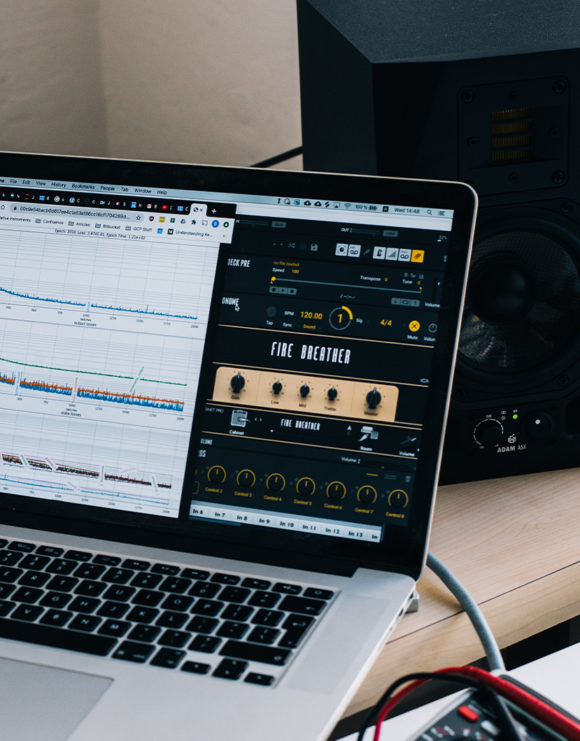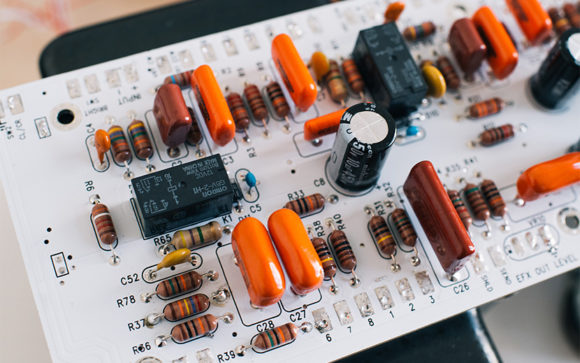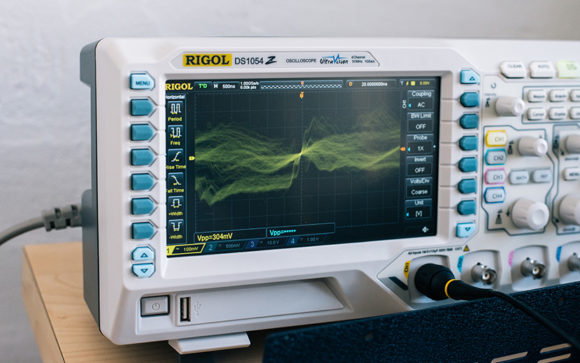If you’re remotely interested in tech, you’ll no doubt be aware of the recent impact of machine learning. From traffic alerts to translations, a whole range of AI-powered tools are rapidly redefining what’s possible across a broad spectrum of industries.
Music creation, however, has often been somewhat resistant to such wholesale adoption of new technological change – consider the ‘analog versus digital’ debate that rages amongst music producers (and particularly those who play guitar) to this day. Although the market is flooded with digital versions of analog circuitry, many gear heads argue that few of these recreations can truly claim to recreate the warmth and character of their hardware counterparts.
Built by software engineers Boris Kuznetsov, Fabian Esqueda and Julian Parker, Intelligent Circuit Modeling represents the somewhat unlikely intersection of these two areas. It’s a technique in which artificial neural networks are trained to produce algorithms that represent the inner workings of analog hardware in fine detail.
The recent release of GUITAR RIG 6 PRO introduced Bass Invader, Chicago, and Fire Breather, the first amps to be built with the new technology, so we caught up with the development team to find out more about it.

The past
In order to fully appreciate what makes the ICM technique so special, it helps to look at some more traditional circuit modeling methods. These can be roughly grouped into two categories, ‘black box’ and ‘white box’.
“The idea of a black box circuit model is that you only really care about inputs and outputs, rather than what happens in between,” explains Julian. “You aim to reproduce the way a sound is affected, without worrying about the actual mechanism that produces that effect.”
Fabian adds, “you might build approximations of the different elements that make up the circuit inside the amp, like a preamp, some tube distortion, and maybe some filtering for example, and then combine them. The problem is, you don’t really capture the way those different components interact with each other.”
All the tone controls, tubes, and other various parts that make up a hardware amplifier have physical relationships with one another that are key to the amp’s overall unique character. These relationships continually evolve and change, depending on what kind of sound is being played and how the amp’s different controls are set up. It’s very difficult to replicate those relationships and behaviors in detail, which means crucial elements of the sound can be lost.
“White box modeling is the opposite,” continues Julian. “It’s totally focused on replicating a process, which requires a much deeper understanding of the mechanism behind it. But doing a full circuit simulation of a guitar amp in a traditional way is a huge amount of incredibly specialized work. It can take many months.”
Plus, as Fabian points out, theory and schematics don’t always tell the full story of how hardware equipment sounds. “Even once you’ve laid out all the math, the equations that show how an amp has been designed don’t always describe everything about the way it sounds. Two analog synthesisers of the same make and model can still have their own slightly different characters, even though they’re identically designed. That’s the beauty of hardware.”
Julian puts it simply: “When you’re talking about stuff like tubes, the mathematical models on their own aren’t always good enough.”
So whichever way you go about it, traditional forms of circuit modeling just don’t quite cut the mustard when it comes to capturing the characteristics that make a piece of analog gear unique. Enter Intelligent Circuit Modeling.

The present
“The development of ICM first started in late 2017, when we were working on DIRT from the CRUSH PACK effects series,” explains Julian. “The process of modeling the circuit that was the inspiration for DIRT involved this particularly tricksy mathematical equation that we couldn’t solve directly. As often happens, in order to move forward we had to iterate – in other words, make an educated guess about the answer to the puzzle, and keep refining that guess until we had something that worked. This is when we came up with the idea of training a machine learning system to do that process for us.”
“From there we developed the technique to model whole equations, and eventually whole circuits,” Fabian continues. “At that point we realized we were doing something really innovative, so we decided to publish the work officially and apply for a patent at the same time.”
The team published their research in September 2019, at the 22nd International Conference on Digital Audio Effects in Birmingham, UK. Those of a scientific disposition can access their full findings in this academic paper. (WARNING: Contains hardcore math.)
The original focus of the academic research was the emulation of a synth filter and some distortion units, but once the momentum for GUITAR RIG 6 PRO had started to build, it made sense to apply the new technology to guitar amps. As the development of the project continued into 2020, things could have been brought to a halt by the Coronavirus pandemic, but Boris built a lab in his apartment so that the work could continue, giving over his living space to the tubes, capacitors, and wires of variously disassembled boutique and classic amps.
“Boris was the real hero during that time,” Fabian says. “He did a lot of the measurements on his own while we were all on lockdown. Without that, there’s no way we could have completed the project in time for the launch.”
Boris explains some more about the process: “You can think of it like getting from point A to point B on a map. You know where you’re starting from, and where you want to go, but you’re not yet sure of the places you’ll pass on the journey. So as well as the input and output of an amp, we also make electrical measurements at various key points inside it, which are called ‘states’. These states are a bit like those missing points on the map, and they tell us everything we need to know about the dynamics of the overall electrical system.”
“We put probes and measuring devices into high voltage amplifiers to collect lots and lots of data – input data, state data, and output data,” Fabian adds. “Once we have all those measurements, we give them to the artificial neural network that we’ve designed. Since we already know that the measurements we’ve taken should produce a certain output, the software can then look to find an algorithm that fits with all the numbers. To begin with it does this by guessing, and although it will almost certainly guess wrong at first, it keeps refining until it gets closer and closer. Eventually it arrives at the solution that we can use to model the amp.”

Thanks to the speed of modern graphics processing units, the program the team has built can check thousands of possible solutions at the same time, in a fraction of a second. Since it takes the neural network a couple of weeks to generate the final algorithm for each amplifier, we’re talking about a simply enormous amount of work. The development of machine learning as a tool started in the 50s, but it’s only in the last few years that computers have become powerful enough to make this process possible.
Fabian explains: “Although there’s been so much research into analog circuit emulations over the years, it’s only really quite recently that machine learning has started to become a big topic in our domain, so for us it was a case of being in the right place at the right time.”
So how does ICM affect the sound of the amps? Julian weighs in on the all-important question: “Older modeling techniques would still require an extensive process of tweaking and tuning to get things sounding just right. The algorithm the machine learning system comes up with is so accurate, there’s no need for us to do that anymore. That’s the big difference.”
“In fact, the neural network will pick out aspects of the amp’s character that we might not notice,” he adds. “We’ve even encountered ‘problems’ with our amp emulations, like feedback at certain frequencies for example, only to discover that the real amp actually does the same thing. There’s just no way that we would ever program something like that on purpose, and the reality is that there will be hundreds of other similar imperfections that the algorithm picks up.”
As Julian observes, it’s arguably these unpredictable characteristics that create the real magic of analog gear. “When a piece of equipment reacts in an interesting way to something it wasn’t designed to do, that’s often when things start getting exciting.”
In other words, ICM picks up all the luscious warmth, aggressive punch, distinctive grit, and more that we expect from classic hardware guitar amplifiers, and recreates it with an unprecedented level of accuracy.

The future
GUITAR RIG 6 PRO is out now with three brand new amps that have been modeled using ICM, but rather than that being the conclusion of the project, it’s merely the beginning of a new run of high quality emulations.
“Since we don’t have to do all the calculating and tweaking ourselves, we can be measuring other amps and circuits while the neural network does its thing,” Fabian points out. “This means we can have so many more amps in the pipeline than we did before, which is the really exciting thing for users of GUITAR RIG 6 PRO.”
“We don’t just want to do guitar amplifiers either,” Julian reveals. “We’re working on a new amp right now, but after that we’re probably going to do a couple of distortion pedals, and down the line we’ll be looking to do synth filters, compressors, EQs, preamps… and anything else that sounds great.”
Beyond that, ICM isn’t the limit to what the team can do with a machine learning approach. Although it has been incredibly effective thus far in enabling digital emulations of highly sought-after analogue equipment, the fundamental principles behind the technology the team has developed can be applied in any number of other contexts. Fabian sets out a bold vision for the future: “Really this is just the start. A lot of skill and knowledge has been acquired during the development of this technique. In future the potential is there for us to bring that to other NI products.”
Watch this space.




















